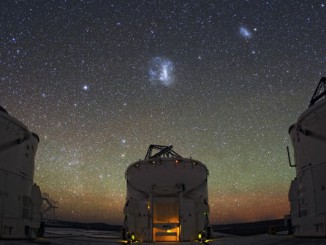Among the vast treasure trove of data collected by the European Space Agency’s Gaia astrometry probe, which has now catalogued some 1.7 billion stars, are details about the composition and rotation of the Large Magellanic Cloud, a satellite galaxy of the Milky Way. According to ESA, this image “combines the total amount of radiation detected by Gaia in each pixel with measurements of the radiation taken through different filters on the spacecraft to generate colour information. Information about the proper motion of stars – their velocity across the sky – is represented as the texture of the image.” By measuring the motions of several million stars, astronomers were able to discern a clockwise rotation using an image processing technique known as Line Integral Convolution. The result is a unique fingerprint-like pattern.




